 The importance of understanding Egyptian history and culture can hardly be over-estimated. Egypt is the country mentioned most often in the Old Testament. Israel’s prophets foretell the future not just for Israel, but for Egypt as well.
The importance of understanding Egyptian history and culture can hardly be over-estimated. Egypt is the country mentioned most often in the Old Testament. Israel’s prophets foretell the future not just for Israel, but for Egypt as well.
Abraham had dealings with Pharaoh, as did Jacob and Joseph. The founding of Israel as a nation is rooted in Moses’ struggle with Pharaoh. The kings of Israel & Judah wrestled with Egypt as a regional power and puzzled over whether to treat her as an ally or an enemy. Jeremiah goes into exile in Egypt rather than Babylon, where he loses his life. Joseph took Mary and Jesus to Egypt to escape the wrath of Herod.
In Roman history, it was Egypt which played a crucial role in the lives and fortunes of Julius Caesar and his nephew Octavian, better known as Caesar Augustus.
For all of these reasons, we have always made the study of Ancient Egypt a key part of our children’s introduction to history. It is a tremendous aid in understanding the Old Testament – and a study of the Ancient World which only touched the classical civilizations of Greece and Rome leaves much of ancient culture incomprehensible.
Among other things, Egypt is the archetypal example of the determining influence of geography on history. Ancient Egypt is really the civilization developed by a string of towns and villages up and down the Nile River – like pearls on a rope. The entire civilization is a narrow corridor, only a few miles wide on either side of the Nile. There is a sharp delineation between the green fertile fields, irrigated by the annual Nile flood and the desolate sands of the uninhabited desert, which begins within sight of the Nile.
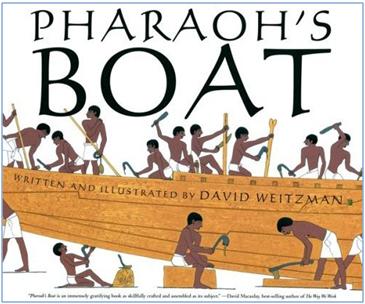 So Pharaoh’s Boat (just published by Houghton Mifflin in May, 2009) is not a plaything or a diverting bit of aquatic recreation. The Nile is central to the existence of Egypt. Egyptians worship the Nile as the giver of life. One of Pharaoh’s most sacred duties was to intercede with the gods on behalf of Egypt to insure the annual flood which irrigates the fields on either side of the long valley. Cheops and the Great Pyramid of Giza which formed his tomb belong to the earliest period in Egyptian history. Perhaps as early as 2600 BC, in the Old Kingdom of Egypt 100,000 workers labored for 20 years to build a stone pyramid over 400 feet tall.
So Pharaoh’s Boat (just published by Houghton Mifflin in May, 2009) is not a plaything or a diverting bit of aquatic recreation. The Nile is central to the existence of Egypt. Egyptians worship the Nile as the giver of life. One of Pharaoh’s most sacred duties was to intercede with the gods on behalf of Egypt to insure the annual flood which irrigates the fields on either side of the long valley. Cheops and the Great Pyramid of Giza which formed his tomb belong to the earliest period in Egyptian history. Perhaps as early as 2600 BC, in the Old Kingdom of Egypt 100,000 workers labored for 20 years to build a stone pyramid over 400 feet tall.
The first part of this delightful book tells the ancient story of how and why a boat was built for Cheops and buried in a pit on the river side of the Great Pyramid. The author and illustrator, David Weitzman, uses the flat 2-dimensional style of ancient Egyptian wall paintings to show/explain why boats were so important to the ancient Egyptians and to show the steps which were taken to build and bury two boats for Pharaoh Cheops. The twist is that the boats, after being designed and built by an ancient shipwright, were disassembled and the pieces placed in an orderly layered arrangement in the pits.
 To tell the story of their discovery and re-assembly, Weitzman switches to a more modern 3-dimensional representational style. The story of the painstaking research that went into re-assembling the boat is as fascinating as the story of their original construction. It was a 3-dimensional jigsaw puzzle with 1,200+ pieces, and no pictures or instructions. Before the Egyptian archeologist, Ahmed Youssef Moustafa, chief of the Restoration Department of the Egyptian Antiquities Service was satisfied, the boat had been put together and taken apart five times. Each time, the team of archeologists learned something new. To solve several particularly difficult problems, Ahmed went to modern Egyptian boat-makers on the banks of the Nile and served as an apprentice, asking questions about the details of the techniques they used. It turns out that many things have stayed the same for over 4,000 years.
To tell the story of their discovery and re-assembly, Weitzman switches to a more modern 3-dimensional representational style. The story of the painstaking research that went into re-assembling the boat is as fascinating as the story of their original construction. It was a 3-dimensional jigsaw puzzle with 1,200+ pieces, and no pictures or instructions. Before the Egyptian archeologist, Ahmed Youssef Moustafa, chief of the Restoration Department of the Egyptian Antiquities Service was satisfied, the boat had been put together and taken apart five times. Each time, the team of archeologists learned something new. To solve several particularly difficult problems, Ahmed went to modern Egyptian boat-makers on the banks of the Nile and served as an apprentice, asking questions about the details of the techniques they used. It turns out that many things have stayed the same for over 4,000 years.
This book is a masterpiece. Although the publisher says that the target audience is children ages 9-12, my estimate is that students up through middle school will find the book quite interesting.
The book carries an endorsement by David Macaulay (and makes a great companion to his book, Pyramid):
“Pharaoh’s Boat is an immensely gratifying book as skillfully crafted and assembled as its subject. In this beautifully written and illustrated account, David Weitzman weaves past and present into a truly satisfying story of technology and discovery, scholarship and craft. While much of the art is done in the familiarly flat Egyptian style, the journey on which it take us is absolutely four dimensional.”
Pharaoh’s Boat is a hardback, 32 pages. It is available directly from Greenleaf Press for $18.00 by clicking on any of the links in this review.
– Rob Shearer, Publisher


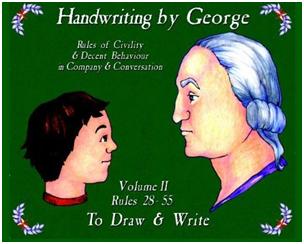

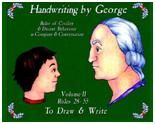

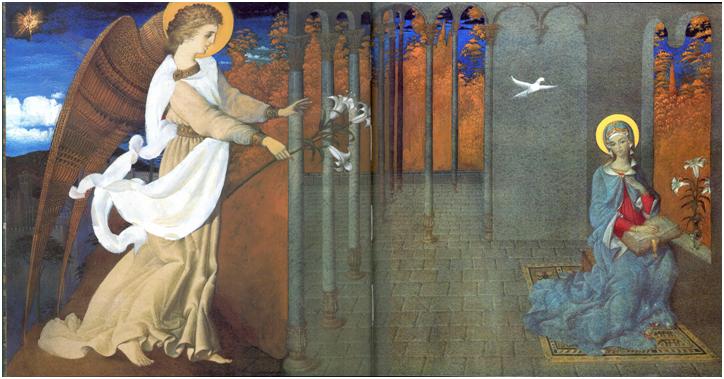




 The paintings that accompany Ms. Cheney’s text are wonderful. The illustrator was able to visit the site of the crossing, consult with local historians and witness a winter re-enactment of the crossing. The attention to detail shows. You can feel the cold. Your eye is involuntarily drawn to the figure of Washington, warming himself by a fire on the New Jersey shore of the river.
The paintings that accompany Ms. Cheney’s text are wonderful. The illustrator was able to visit the site of the crossing, consult with local historians and witness a winter re-enactment of the crossing. The attention to detail shows. You can feel the cold. Your eye is involuntarily drawn to the figure of Washington, warming himself by a fire on the New Jersey shore of the river.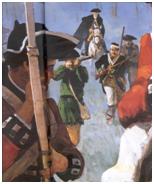 Following the surrender of the Hessians at Trenton, Washington continued his offensive by launching an attack on the British regulars a few miles northeast of Trenton at Princeton. In that battle, Washington personally rallied his troops and led them to within thirty yards of the British lines. It is miraculous that he survived the volleys of musket fire, but when the British line broke, he joined in the pursuit.
Following the surrender of the Hessians at Trenton, Washington continued his offensive by launching an attack on the British regulars a few miles northeast of Trenton at Princeton. In that battle, Washington personally rallied his troops and led them to within thirty yards of the British lines. It is miraculous that he survived the volleys of musket fire, but when the British line broke, he joined in the pursuit. PS: You have to love the picture of Lynn Cheney with a group of students on the back cover!
PS: You have to love the picture of Lynn Cheney with a group of students on the back cover!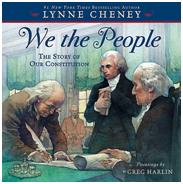
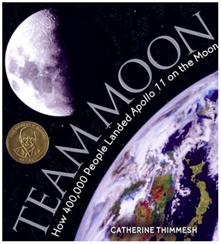
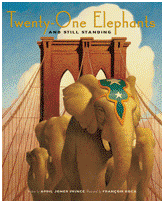
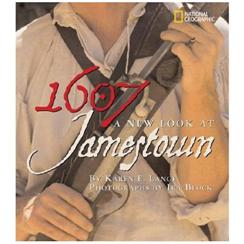





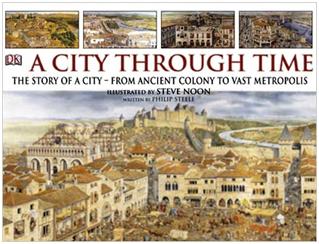 The second DK book is constructed on the same pattern as
The second DK book is constructed on the same pattern as